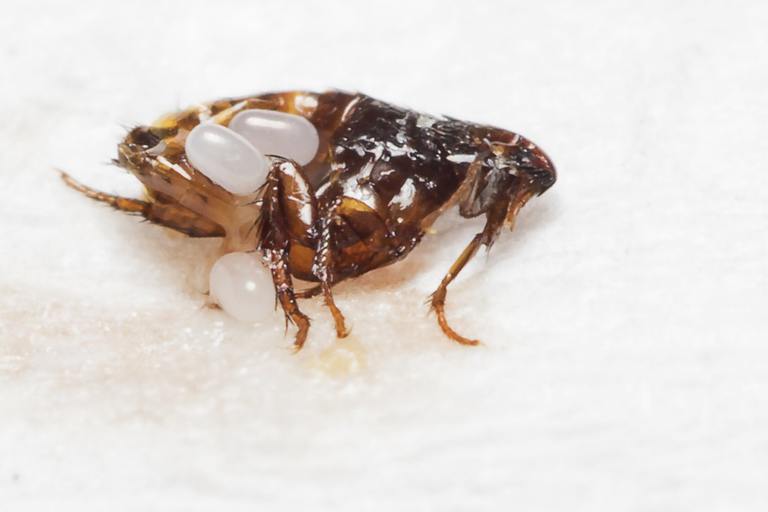Flea Eggs: How to Spot, Treat, and Prevent Infestations
Published: November 13, 2024

Fleas are a common pest that can cause significant discomfort for both humans and pets. Understanding the life cycle of fleas, particularly flea eggs, is crucial in effectively combating these persistent pests. This article will provide detailed information about flea eggs, including their appearance, common locations, incubation periods, and methods for control.
What Do Flea Eggs Look Like?
Flea eggs are tiny but visible to the naked eye. They measure approximately 0.5 mm in length and are oval-shaped. Initially, they appear white or off-white but may take on a slightly translucent hue under certain lighting conditions. Due to their small size and light color, they can easily be mistaken for dandruff or grains of salt.
Where to Find Flea Eggs
Flea eggs are typically found in areas where your pets spend most of their time. These include:
- Pet Bedding: One of the primary locations where flea eggs accumulate is in pet bedding. The warmth and proximity to hosts make it an ideal breeding ground.
- Carpets and Rugs: Flea eggs can fall off pets as they move around your home, often landing in carpets and rugs.
- Furniture: Upholstered furniture can harbor flea eggs if your pets frequently rest on couches or chairs.
- Cracks and Crevices: Hard-to-reach places like floorboard cracks or gaps between tiles can also house flea eggs.
Incubation Periods
The incubation period for flea eggs varies depending on environmental conditions such as temperature and humidity:
- Temperature: Optimal temperatures for hatching range from 70°F to 90°F (21°C to 32°C). At these temperatures, flea eggs typically hatch within two days to two weeks.
- Humidity: High humidity levels (around 70% or higher) accelerate the hatching process. In drier conditions, the incubation period may extend.
Once hatched, the larvae emerge and begin feeding on organic debris until they pupate into adult fleas.

Combating Flea Eggs
Effective control of flea infestations requires a multifaceted approach targeting all stages of the flea life cycle—especially the egg stage.
DIY Methods
- Regular Cleaning:
- Vacuum carpets, rugs, furniture, and pet bedding frequently to remove flea eggs before they hatch.
- Wash pet bedding in hot water weekly to kill any existing flea eggs.
- Natural Remedies:
- Sprinkle diatomaceous earth on carpets and other surfaces where fleas might lay eggs. This natural powder dehydrates and kills fleas at various stages of their life cycle.
- Use essential oils like lavender or eucalyptus diluted with water as a spray; however, ensure these oils are safe for pets before application.
- Environmental Control:
- Maintain low indoor humidity levels using dehumidifiers.
- Regularly mow lawns and trim vegetation around your home to reduce outdoor habitats favorable for fleas.
Professional Pest Control Services
For severe infestations or when DIY methods prove insufficient, professional pest control services offer comprehensive solutions:
- Detailed Inspections:
- Professionals conduct thorough inspections to identify all potential breeding sites within your home environment.
- Customized Treatment Plans:
- Tailored strategies utilizing chemical treatments that target not only adult fleas but also disrupt the development of larvae and pupae into adults.
- Educational Insights:
- Technicians educate homeowners about preventive measures specific to their living environment—ensuring long-term protection against future infestations.
- Follow-Up Services:
- Scheduled follow-up visits help monitor progress and adjust treatment plans as necessary for optimal results.
Conclusion
Understanding the characteristics of flea eggs—including their appearance, preferred locations for laying them down by adult fleas, and how environmental factors influence their development—is essential in developing effective strategies against these pervasive pests.Whether you choose DIY methods or seek professional assistance from pest control experts,the key lies in consistent effort across multiple fronts.By staying vigilant,you can protect your home,yourself,and your beloved pets from discomfort caused by fleas,and enjoy a healthier living environment free from these uninvited guests!